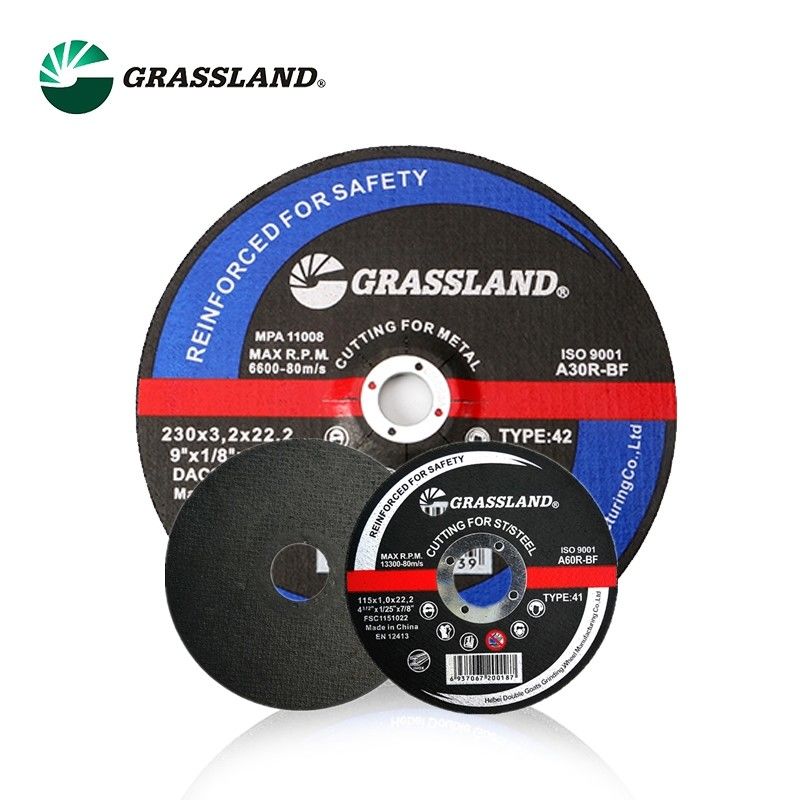Understanding Cutting Discs for Metal A Comprehensive Guide
Cutting discs are essential tools in various industries, particularly in metalworking, fabrication, and construction. These discs are designed to cut through metal materials efficiently, making them indispensable for tasks ranging from simple repairs to complex industrial applications. In this article, we will explore the various aspects of cutting discs for metal, including types, materials, applications, safety considerations, and best practices.
Types of Cutting Discs
Cutting discs for metal can be categorized based on their structure and the type of material they are designed to cut. The two most common types are
1. Bonded Cutting Discs Made from abrasive grains such as aluminum oxide, silicon carbide, and zirconia, these discs are bonded together using a resin or a metallic binder. They are ideal for cutting steel, stainless steel, and other ferrous metals. Bonded cutting discs are recognized for their durability and longevity.
2. Diamond Cutting Discs These discs feature industrial diamonds embedded in a metal matrix. They are specifically designed for cutting harder materials like stainless steel, non-ferrous metals, and reinforced materials. While they may be more expensive than bonded discs, diamond discs provide exceptional cutting capabilities and longer service life.
Materials Used in Cutting Discs
The construction of cutting discs plays a crucial role in their performance. Common materials include
- Aluminum Oxide This versatile abrasive is effective on a wide range of metals and is often used in less demanding applications.
- Zirconia Alumina Known for its toughness, zirconia alumina is suitable for cutting harder materials and provides a longer service life than regular aluminum oxide.
- Silicon Carbide This material is typically used for cutting non-ferrous metals and other hard, brittle materials.
- Diamond As mentioned earlier, diamond blades are used for the toughest materials and provide precision cuts, albeit at a higher cost.
Applications of Cutting Discs
Cutting discs are used across a variety of sectors
- Metal Fabrication In fabrication shops, cutting discs are used to manufacture components and assemble metal structures
. They are vital in workflows that require precision and speed.cutting disc for metal

- Construction Cutting discs are commonly employed in construction for tasks such as pipe cutting, rebar cutting, and general metalworking tasks.
- Automotive Industry Mechanics and auto body professionals rely on cutting discs for metal repair, panel replacement, and fabrication tasks.
Safety Considerations
Safety should always be a priority when using cutting discs. Here are some important considerations
- Personal Protective Equipment (PPE) Always wear appropriate PPE, including safety goggles, gloves, and ear protection. The risk of flying debris and noise during metal cutting cannot be underestimated.
- Proper Equipment Use a compatible tool with the cutting disc to prevent accidents. A tool that is not designed for the specific disc can lead to breakage and injuries.
- Inspect Discs Before Use Always check cutting discs for cracks or other damage before use. A damaged disc can shatter during operation, posing serious safety hazards.
- Understand the Material Different metals require different types of cutting discs. Using the wrong disc can lead to inefficient cutting, overheating, or damaging both the disc and the workpiece.
Best Practices for Using Cutting Discs
To optimize the lifespan and performance of cutting discs, consider the following practices
- Maintain Proper Speed Follow the manufacturer’s guidelines for operating speeds. Exceeding the recommended speed can lead to overheating and premature wear.
- Use Light Pressure Allow the cutting disc to do the work. Applying excessive pressure can lead to breakage and create an uneven cut.
- Store Discs Properly Keep cutting discs in a cool, dry place away from sunlight. This prevents degradation of the disc material over time.
In conclusion, cutting discs for metal are vital tools that require careful selection and usage. By understanding the different types, materials, applications, and safety practices, users can make informed choices that enhance efficiency and safety in metalworking tasks. Whether you're a professional tradesperson or a DIY enthusiast, having the right cutting disc for your specific application can make all the difference in achieving smooth, precise cuts every time.
Post time:Dec - 04 - 2024

















